In this month’s selection of excellent literature in translation, there’s something for everyone. From a dreamy and architecturally expressive graphic novel that speaks to fates and futures, to a collection of strange and visceral short stories delineating the network between bodies and their definitions. And if science fiction or unsettling tales aren’t your thing, there’s also the powerful narrative on a prodigal son who returns to navigate the pathos-filled landscape of past tragedies, loneliness, and isolation; the masterfully told history of Catalonia as it plays out through the life of a woman embroiled in the tumult of her time; or a cunning satire of contemporary Morocco that traverses territory of both physical and virtual landscapes. Read on for reviews on each of these remarkable works; hope you enjoy the trip!
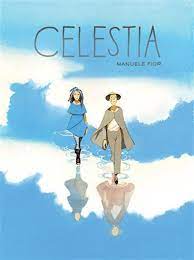
Celestia by Manuele Fior, translated from the Italian by Jamie Richards, Fantagraphics, 2021
Review by Thuy Dinh, Editor-at-Large for the Vietnamese Diaspora
“. . . from above, this island is in the shape of two hands intertwined.”
—Dr. Vivaldi, from Manuele Fior’s Celestia
Such is how Dr. Vivaldi alludes to Venice—curved strips of land yearning to touch and engulf each other in blue space. Ambitiously realized by Manuele Fior and eloquently translated by Jamie Richards, Celestia—Venice’s oneiric double—is a visual poem and modernist dance in graphic novel form, encompassing diaphanous terrains and gothic undertow, exuberantly tumescent with allusions to literature, art, and architecture.
Born in 1975 in Cesena, Italy, Fior currently lives in Paris, France. Drawing from his studies at Venice’s University of Architecture (Istituto Universitario di Architettura di Venezia, or IUAV), he has, over time, developed a dynamic visual language with narrative elements drawn from both Western and Eastern aesthetic traditions. Several of his acclaimed graphic novels have been translated into English and published by U.S.-based Fantagraphics, and Celestia marks his fifth collaboration with Richards—a scholar and translator of Italian literature.
Deeply influenced by John Ruskin’s The Stones of Venice, Joseph Brodsky’s Watermark, and Pier Paolo Pasolini’s poem “Profezia” (“Prophecy”)—Fior depicts Celestia as a fusion of dualities that exist both in the history of Venice as well as in the fictional universe of his work: Gothic and Renaissance, spiritual and secular, traditional and modern, rational and organic, freedom and oppression, community and exile. While in Fior’s earlier work—such as The Interview—telepathy is depicted as an extraterrestial gift, in Celestia this ability has existed from time immemorial among certain people, possibly as an evolutionary process. When the story opens, the island of Celestia is home to a group of telepathic refugees, who long ago fled from a horrific invasion that had devastated the mainland. One of them, Pierrot—cloaked in his commedia dell’arte persona—now wishes to renounce his telepathic power, which he perceives as a tragic link to his childhood. After delivering vigilante justice to a member of the demonic syndicate that controls the island’s murky depths, Pierrot escapes Celestia with Dora—a seer also burdened by her gift, as well as the oppressive intimacy enforced by her mind-melding circle of elites, led by Dr. Vivaldi.
Beset by this innate ability that has become a form of enslavement, Pierrot and Dora set off—hoping their journey would both resolve the past and guide them toward a new future. The couple’s subsequent arrival on the mainland brings them into contact with an omniscient child, or Child—who embodies both the future of mankind and its messiah.
However, Pierrot, Dora, and Child do not turn into an allegory of the holy family, nor does their Rothko-hued, apocalyptic quest—via a solar-powered car resembling a 1981 DMC DeLorean—replicate the construct of traditional theology. Pierrot, a false hero, instead becomes foil and “handmaiden” to Dora—the seemingly true, queer protagonist of Fior’s epic. The Child also represents a red herring—while he may be the prophet of his dystopian world on the mainland, he does not seem to prefigure in Dora’s emergent destiny.
Pierrot’s theatrical posturing—his role as the false hero/fool in Fior’s graphic universe—is conveyed effectively via Richards’ vibrant and supple translation. Far from being an “invisible translator” constrained by the graphic novel format, Richards, by exploring the lacunae between Fior’s visual and verbal elements, achieves a haunting register for Pierrot in English that evokes Ruskin’s Byzantine ideal. Her rendering of Pierrot also brings to mind T.S. Eliot’s Prufrock, who is “not Prince Hamlet, nor was meant to be,” but a tool to “swell a progress, start a scene or two.” Overall, Richards’ interpretation of Pierrot both approximates Fior’s poetic text and deftly mediates its linguistic ambiguities:
When darkness falls on the streets,
Vampires creep toward the bed,
Choke you against the oak . . .Quando il buio viene nel campo,
I vampiri si stringono al capezzale.
Ti strozzano sul ramo del pino . . .
In the above example, Fior’s ramo del pino (pine bough) becomes oak in Richards’ version. Her solution in English artfully links capezzale[1]—Fior’s word choice that holistically suggests Victorian deathbed, sexual repression, and a woman’s neck as associated with preying vampires—to oak which can imply a bed or headboard made of oak. Richards’ pairing of oak with choke (strozzano) also mimics Fior’s rhyming scheme in the original.
In another example, Richards vividly captures Pierrot’s desire for the unknown as “a gaping hole/whether in your belly or in your soul,” whereas Fior has his character articulate this feeling more elusively as un vuoto incipiente/ pìu o meno li dove si trova il ventre (“an incipient emptiness/more or less where the belly is”). In any event, Richards’ expressive portrayal of Pierrot complements Fior’s suggestive approach. Their linguistic collaboration resembles a graceful pas-de-deux between layers of idea and perception.
Fior’s painterly panels, like his organic narrative, often do not follow the sequential action-to-action layout of traditional comics, but employ disorienting shifts in perspective, scene, and mood—bringing to mind Brodsky’s metaphor of Venice as a trammeling labyrinth. In telling the story of Celestia, Fior also pays homage to his aesthetic influences. For example, Dr. Vivaldi’s Telepathy Institute resurrects Frank Lloyd Wright’s unbuilt Masieri Memorial on the Canal Grande. Carnelian and bisque façades along Celestia’s shoreline echo Vermeer’s The Little Street. The golden-hued, art nouveau style panels set in a Celestian brothel bring to mind Toulouse-Lautrec’s Moulin Rouge series, yet their mood of shimmering anger and desire also evoke Egon Schiele. A children’s commune on the mainland—where the scene of The Child’s homecoming unfolds—recreates Louis Kahn’s Salk Institute, with its monastic, hive-like cells multiplying infinitely toward the ocean.
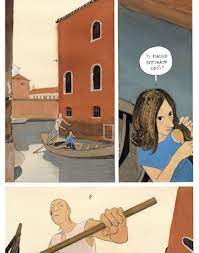
Fior’s alternate universe does not advocate an erasure of the past, but a thoughtful reassessment its avant-garde experiments. The cerulean blue permeating Celestia’s cover and spilling over its length and width symbolizes his poetic confluence of binary opposites. Like the aerial contours of Venice, Fior’s dialectical concepts are sinuous and mutually penetrative. His mesmerizing allusions embrace our collective cultural heritage, whereas the negative space in his work affirms the creative process, its resistance to narrative tyranny, and its spiritual rapport—or telepathic communion—between author and reader.
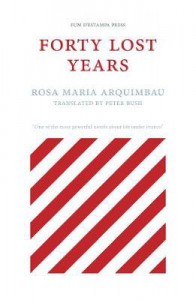
Forty Lost Years by Rosa Maria Arquimbau, translated from the Catalan by Peter Bush, Fum d’Estampa Press, 2021
Review by Ruwa Alhayek, Social Media Manager
“Politics,” our protagonist’s father tells her early on, is “a load of shit.” But still it is politics that unfold in Rosa Marie Arquimbau’s coming-of-age—and occasionally autobiographical—novel about the working-class seamstress turned haute couture dress-maker Laura Vidal. Forty Lost Years is a masterfully woven account of the personal and the political, the political through the personal, the personal because of the political. It begins with the declaration of the Republic of Catalonia in 1931, continuing through the Spanish Civil War and the dictatorship of Francisco Franco until the 70s. We are privy in this narrative not only to class politics, gender politics, and the goings-on within the Republic, but also made aware—if we read (as Edward Said would have us do) contrapuntally, with an eye to the way imperialism plays out beyond the metropole—of those disaffected and displaced by colonialism and racism.
Laura Vidal is in a hurry to grow up, chasing, from an early age, a freedom that eludes her and those around her (even as they aren’t aware of it). Time passes too slowly for the fourteen-year-old who feels she must shut away her rebellious spirit—“obeying, obeying, always obeying.” But that spirit is not so easily quieted, and seeps out in daily conversations, transforming into a voracious inquisitiveness that is only hindered by a stronger self-consciousness; she never wants to appear simple, cautious even around her closest friend, Hermínia. Hermínia lends her books and tells her all sorts of things she doesn’t know—about politics, the plots of movies their parents won’t let them see, and the truth about the name of a young neighborhood girl.
“Hermínia,” Laura tells us, unlike her who is discontented, has “resigned herself to reality.” But she is also the one who assures Laura that she can choose her romantic partners—that men can choose among women so of course, women ought to choose among men. Hermínia is intelligent too, aware of the power dynamics at play in the shop they both work in, and knows that women must always play the part expected of them—charm their acquaintances, in more ways than one, and that it is never enough for a woman simply to be pretty.
When Hermínia suggests that they attend a talk on “the rights of the working woman,” herself unsure what those rights entail, Laura suggests instead that they go to the cinema—“at least that would be a laugh.” She was disappointed to learn from her father that a talk on working women’s rights would simply be about “being properly paid.” Laura has no time for talk of politics, but, like her father, does care deeply about justice and injustice. Even as she maintains an even-tempered tone throughout the novel, she never fails to comment on the stark and ridiculous contrast between young women who could “buy practically nothing with their earnings,” while people of means bought “everything they came across . . . even if they didn’t need them, like shoes that weren’t their size.” The no-nonsense way she says, “if those that give the orders are also called workers, we might as well give up,” is refreshingly hilarious. Throughout her recollections, the reader is similarly and routinely charmed, first by her innocence and idealism, then, as she grows older, by her witty responses and clever quips, seemingly delivered always with a straight face.
Arquimbau’s tale is a masterpiece of motley moods—that near-universally familiar frivolity that tries its best to ignore overwhelming despair, the cruel indifference of the nouveau riche fat with luxury made possible by the poverty of others, time and need-imposed numbness, nostalgia for a home that forces you to escape to a foreign but safe place, notions of moral elasticity painted once, twice, three times over disgust with oneself until it looks like effortless composure.
In many ways, Forty Lost Years, first published in 1971, feels like an ancestor—an older Spanish cousin of Elena Ferrante’s Neapolitan Quartet. It is a vivid portrayal of the changing of an era through a woman’s life, one intertwined not only with the lives of those closest to her—her childhood friend, her mother, sister, brother, and father—but also with the lives of her co-workers, customers, a young journalist, the men she lets love her, and the random passers-by who yell at her and other smartly-dressed women. It is in these relationships that we see the politics of the time play out, and also, brilliantly enough, in Peter Bush’s skillful translation. In the translated language itself, we see mirrored the hazy borders of nations, and the more subtle lines of division. In what Peter Bush translates and leaves untranslated, the setting of the story is unforgettable. We are confronted, as Laura and other Catalans flee the nationalists and approach the border of France, with a disintegration and hybridization of language; the translation here, as borders are forced back into a state of semi-porousness, eases and lets up. The language of our characters when they speak takes center stage— what are they speaking? Who can understand them? And as they attempt to travel to South America too, who can’t?
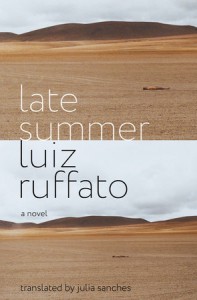
Late Summer by Luiz Ruffato, translated from the Portuguese by Julia Sanches, Other Press, 2021
Review by Suhasini Patni, Editor-at-Large for India
“How can a novel so wrenching be so sublime?” asks author Junot Díaz of Luiz Ruffato’s Late Summer. Translated by Julia Sanches, the Brazilian author’s latest novel is a book about belonging, memories, and family life in Cataguases, a small industrial center in the southeastern part of the country where he grew up. Ruffato, born to working class parents, has spent much of his writing career exploring class differences in São Paulo. His first novel They Were Many Horses, a tribute to the dynamic city, won the Prêmio Machado de Assis—the biggest literary award given by the Brazilian Academy of Letters. Other than being a successful writer and journalist, Ruffato is also one of the founders of a secular movement known as The Church of the Book as Transformation: a movement that believes books can change lives in radical ways. In Late Summer, he explores a family torn apart by economic differences and death, and the return of protagonist Oséias from São Paulo.
Wading through old, lost memories and recollecting them with a strange sentimentality and detachedness, protagonist Oséias returns to Cataguases in search of answers for certain ambivalent questions. Walking through the crevices of his hometown, he grapples with a broken family, a crime-infested city, and the ruins of his own life. He hasn’t been to Cataguases in nearly two decades, his wife had no interest in visiting, and he stopped visiting entirely after his mother’s death—yet he is familiar with every alley and street, and with each corner of the city, his senses step out of their dull neglect. But what makes the book truly special is that the story refuses to present a singular idea of breakdown. The city has expanded despite the absence of Oséias, and his family live their own valuable lives despite a lack of emotional attachment to one another; while he seeks a reconciliation, the others do not. Therefore, the questions he holds up with importance are irrelevant to the others.
Sanches’s deft translation highlights the impoverished man and portrays a family broken apart by the suicide of Oséias’s sister, Lígia. Although none of his siblings talk to each other anymore, they are united in that they have forgotten all about Lígia. “You keep looking back. You can’t see what’s around you, much less what’s right under your nose,” says Rosana, chastising Oséias for still worrying about the incident. With little or no paragraph breaks, the book is divided into six chapters, each highlighting a day Oséias spends walking through the city. Every street brings forth a memory hidden in the back of his mind. Behind the door of every home is a resident he is familiar with. The mayor is an old school friend. The man who sells him coffee is a bully from school. The woman who sells newspapers for dog poop is his ex-girlfriend. The man on the bus-stop is a former teacher. Yet the reassurance Oséias appears to seek is far from his grasp. The mayor refuses to sit down and chat. The bully is still the bully. The ex-girlfriend throws herself at him despite his evident reluctance. The former teacher burdens him with stories of grappling with his queer identity, but Oséias is uninterested. None of his siblings are willing to speak of Lígia’s death. His ambivalence is only rewarded with more ambivalence.
The delicate translation captures not just the ambivalence of the character, but the auditory and tactile senses of the text.
Fat drops crackle at intervals on the roof. Then, all at once, a thick curtain of water pours down from the sky.
“I know why you’re here, Oséias,” Rosana says now, haltingly. “You’ve come to stoke a dying late summer ember . . . You’re a creature of shadows, feeding off the suffering of others . . .”
Sanches is a founding member of Cedilla & Co., a collective of translators—including Jeremy Tiang and Allison Markin Powell—committed to making international voices heard in English. She translates from Portuguese, Spanish, Catalan, and French into English, and in Late Summer, her prowess resonates especially through Ruffato’s constant use of staccato sentences, which detail the mundane and quotidian. The book is an anti-journey. The man gets up, showers, shoves food down his throat. He endlessly details what he eats. He counts his money so that he can hand out exact change in every transaction. He remarks on how the coffee tastes (it never seems to taste good). He lists things he needs to do. Buy toothpaste. A hat. Shampoo and conditioner. Meet a pastor. Ambush the mayor. None of the things he sets out to do really happen. But this is where Junot Diaz’s remarks of the book comes alive—how can endlessly detailing tasks be so sublime? Ruffato portrays not only heartbreak, abuse, declining health, and suicide, but also nostalgia, warmth, and humor.
Ruffato is known for his keen sense non-linearity, and this novel—though arranged by chapters based on each of the six days he spends in Cataguases—is a testament to his talent. Memories latch onto the present and spill into the future seamlessly. The tense wanders like Oséias’s mind. No matter how much he wants to follow the routine he has set up for himself, he is unable to live up to it, and the narrative therefore borders onto a stream-of-consciousness style of writing.
Descriptions spill into conversations, which in turn have the timbre of cohesive speech—but filtered through Oséias, they remain without rebuttal or even depth. Oséias rarely speaks; although he has come to Cataguases to search for answers, he stifles his voice in most opportunities. It becomes evident that this journey is less about static answers, but more about a definitive end, the only thing Oséias actually seems capable of doing. “You keep looking back,” Rosana tells him. Although it might seem like he is, Oséias is neither looking back nor looking forward. He is submerged in the depravity of the present. The reading experience, then, is also about exploring the anti-journey, rather than reveling in neat answers. The hypnotic lies in the ambivalence of the characters. The glimpses of different lives, where the reader is unable to fully immerse oneself, provides a gaze not only of a dynamic city, but of the many faces of family strife.
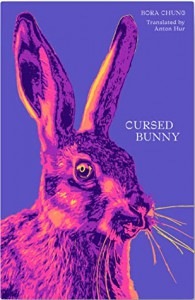
Cursed Bunny by Bora Chung, translated from Korean by Anton Hur, Honford Star, 2021
Review by Barbara Halla, Assistant Editor
There is no prologue to Bora Chung’s Cursed Bunny—you open the first page and there it is: a repugnant head is coming out of a woman’s toilet and calling her “Mother.” The ensuing story, simply entitled “The Head,” is a reverse Picture of Dorian Gray of sorts; the woman nourishes, quite unwillingly, the being living in her toilet—for there is truly little she can do to stop herself from defecating and urinating, or having her period. No matter how many times she flushes it down the toilet, the head never leaves her alone. Yet, the presence of this putrid ghoul is treated with nonchalance by everyone around, including the woman’s family. It’s a grating inconvenience in an otherwise unremarkable life, building toward an inevitable climax that leaves the reader reeling, for it seems to hint at our own general powerlessness over our own lives.
The ten tales that make up Cursed Bunny glide seamlessly from one to the next, unperturbed by any desire to help the reader settle in. Hur’s chameleonic translation is key to the success of this aspect of the book: he slithers between the futuristic and the folkloric with ease, while helping the collection maintain a cohesive atmosphere. With every story, one is thrown into a metaphorical quagmire. Unmoored and possibly drowning, the only thing one can do is to trust Chung’s narrative voice as guidance, abetted by Hur. By the time one realizes the sunken depths of the shifting sands, however, it will already be too late to turn back. The only true way out is through.
Eerie and unsettling as it may be, it feels unsatisfying to call Cursed Bunny “weird”—despite the fact that it does include a woman giving birth to a blood clot, a fox that bleeds gold, and even a levitating ship. In fact, perhaps the feeling of discomfort the reader may experience is less the general squeamishness of reading an elegantly rendered episode of body horror, than an uncanny sense that there is something familiar to this collection—that of a memory we have long repressed, or a gruesome family story we’ve decided to disguise as a fairytale, for its truth is too much to bear.
On the one hand, there is the dreadful, familiar terror of possessing a body capable of gestating, exemplified by “The Head” and “The Embodiment,” both stories of the tragedy of involuntary, forced motherhood. “The Embodiment” in particular manages to expertly weave the experience of being a woman trying to navigate a hostile health care system that distrusts women as unreliable witnesses to their own experiences. Chung portrays this particular situation in all its frustrations, and this along with other absurd things, when deftly chronicled on the page, becomes suddenly hilarious in their absurdity.
There is a fairytale collection-like quality to Cursed Bunny which perhaps also accounts for its sense of familiarity. And in all the more outwardly fairytale-esque pieces, exploitation and torture for the sake of financial gain take center stage. Yet, each attempt to escape an exploitative arrangement, or to seek revenge against it, has disastrous consequences; in the case of “Scars,” the annihilation of the beast that terrorized a nearby village leads to the annihilation of the village itself. So, the question across Cursed Bunny becomes: what if your survival depends on the very thing that makes you sick?
Alternatively, what if greed is more powerful than any moral qualm? In “Snare”—which is also the collection’s standout piece—a merchant imprisons and bleeds dry a fox whose blood turns into gold, despite the fox’s pleas, delivered in a human voice. The fox then places a curse on the merchant’s family, whose own son can also bleed gold, but only after savoring his twin’s sister blood. However, to what extent is it a curse, if the merchant is ruthless and gleefully continues to benefit financially from his children’s twisted arrangement?
Indeed, an irreconcilable sort of entrapment characterizes pretty much every story in this collection, but there are few easy dynamics here. In the pitch perfect ending to this book, “Reunion,” the narrator enters into a relationship with a man who likes being tied up in the bedroom. As she binds him, the narrator contemplates the fact that while she is the one doing the tying, she has little power in the arrangement; the man is the one dictating her actions and the script she is supposed to follow. For all the mythlike nature of Cursed Bunny, its interwoven complexity keeps it from being simply the kind of book that serves easily swallowed lessons in morality.
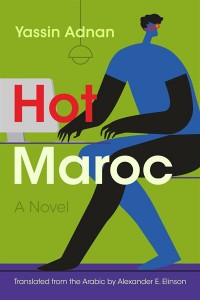
Hot Maroc by Yassin Adnan, translated from the Arabic by Alexander E. Elinson, Syracuse University Press, 2021
Review by Alyea Canada, Assistant Editor
At this point in internet history, we are all pretty familiar with online trolls. In the past decade, we have witnessed, with increasing alarm, the growth of trolling—from disrupting conversations on online message boards, to harassment and personal threats, to coordinated disinformation campaigns wielding incredible amounts of political power. In Yassin Adnan’s debut novel, Hot Maroc, the narrative similarly follows Rahhal Laaouin as he grows from a bullied child, to a cowardly adult, to an internet troll against a backdrop of political turmoil in Marrakesh, Morocco. The satirical novel, deftly translated by Alexander E. Elinson, is unmistakably Moroccan, but deals with universal issues: political corruption, blowhards and know-it-alls, and internet anonymity.
In tracing Rahhal’s subtle transition, Adnan employs sensitivity but stops short at sympathy. Rahhal is a deeply unpleasant and profoundly mediocre person, whose only real talent is the ability to quickly assess people’s core traits and assign them an animal alter ego. Hassaniya, his eventual wife, is a hedgehog; his mother is a pelican; and one of his comrade’s a cow. Rahhal doesn’t have any grand illusions about himself and freely identifies with a rodent—the squirrel.
Mice, rats, and squirrels may be from the same order—Rodentia—but the squirrel has never been from the Muridae family. It is from a superior family . . . Never in their long rodent history could rats dream of possessing a squirrel’s memory. A squirrel couldn’t possibly forget where is had once stored nuts. Ever. Rahhal, then, was endowed with at squirrel’s sense of smell, and a memory just as strong.
There is something about Rahhal’s insistence on not only assigning people animal alter egos, but almost exclusively referring to them as such, that serves to cut his subjects down a bit. It is a reminder that while we can play at lofty ideas and revolution, we are still really just animals at heart, and will predictably behave as such.
The novel jumps back and forth across time, and thus we are able to watch Rahhal watch those around him, carefully arming himself with their personal facts and learning how to play them off of each other. The novel opens in the 1990s, a time marked by protests of the National Union of Students of Morocco, a movement that Rahhal joins because they are fighting to get expelled students—like himself—reinstated to the university, rather than any political ideology. It is also during this time that Rahhal learns the damage that can be wrought through anonymous slander. The novel avoids the easy assignments of hero and villain with a wide-ranging cast of characters and caricatures; there are individuals who are definitely more compelling and charismatic that Rahhal, but not necessarily better people. In fact, one encounters a full range of pretentious faux-intellectuals and self-righteous, uninformed “revolutionaries.”
Hot Maroc is set across a number of large political changes, but it also grapples with the simultaneous explosion of the internet. Internet cafes were suddenly accessible and affordable to the average citizen, and it is through running one such café that Rahhal eventually finds his calling. In the anonymity of online comments that he finds the power he believes he deserves. “[H]is matériel is always at the ready: charges of treason; accusations of conspiring with the Mukhabarat agents; going after his adversary’s honor . . . [he] always made sure a bit of the information was true in order to guarantee the trust of the readers . . . After that level as many false charges as you can!” Rahhal basks in his ability to control conversations, taking great pride in the fact that readers begin seeking out his comments first. As Rahhal is increasingly drawn into the news site Hot Maroc, his alter ego—The Squirrel—takes over, as does the animal alts of the other characters. But keeping the story from fully becoming an “Animal Comedy” (as the last section is titled) is the intersection of people who patronize Rahhal’s café, the introductions of which shed much light on contemporary Moroccan society. There are exchanges about the treatment of African migrants, the stigma around sex work, and clashes between generations, all setting the tone for a society that is variously in flux and unsettled, and how easy corruption comes by way of this instability. I think this is perhaps the most universal aspect of this novel; everyone has felt unmoored in society at some point, and it is easy to connect to likeminded people on the internet. This is not to say that Adnan gives trolls a pass—quite the opposite. He very squarely takes aim at those who undermine political movements by talking a big game online but doing very little offline.
Humor and satire are not easy to translate. They are oftentimes connected to a specific time and space, and there can be a loss of linguistic playfulness or a tendency toward over-explanation when attempting to convey humor to outsiders, but Elinson largely avoids these pitfalls. The novel is not just from the Arab world, but specifically Moroccan. In the translator’s note opening the book, Elinson mentions that the text is rife with references to literature and culture—both high and low—that are largely local, but also national and global. The language of the original Arabic shifts between registers and contexts from the more standard written Arabic of the narration to dialogue that largely takes place in Darija, a Moroccan dialect. Elinson navigates these shifts in English well, relying on context and the occasional stealth gloss to help the reader. At the same time, however, the sheer complexity and layered nature of the plot, as well as the speed with which characters are named and renamed, made it a bit difficult for me to follow at times; I found myself stopping often to look up political events or Islamic poets to help understand the context of the novel and events. Knowledge of Moroccan politics and society are not essential to understanding and enjoying Hot Maroc, but without it, I was often nagged with the sense that I was missing something.
At 425 pages, Hot Maroc can seem intimidating, but readers shouldn’t be deterred. As specific as its depiction of the machinations of power, dissent, and social change can be, it is also familiar. There is something quietly subversive about depicting a society in flux through the eyes of someone who so clearly was never destined to be a hero. Rahhal may choose to use his status as an everyman for evil, but his story is still a reminder of the latent power the average citizen has to change their world.
[1] Capezzale is defined variously as bedside; a bolster cushion placed across a bed to keep it raised; a sickbed or deathbed; and an open collar or a woman’s décolletage. A dictionary from 1855 also defined capezzale as a neckerchief.
*****
Read more on the Asymptote blog:

